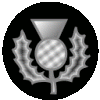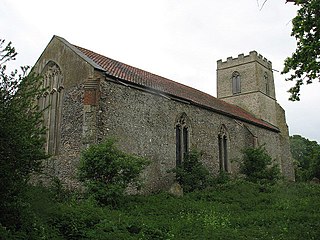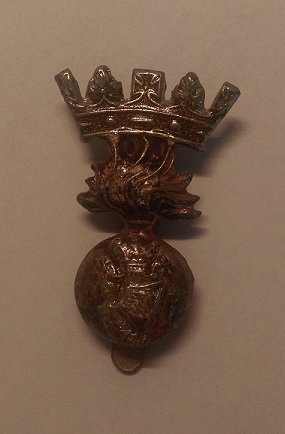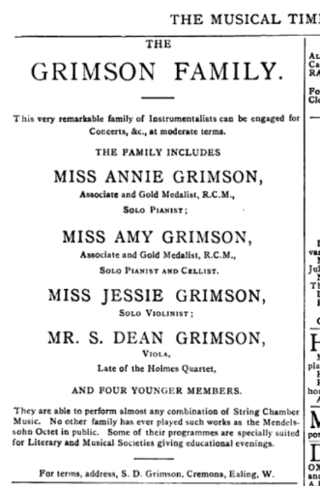Related Research Articles

The 9th (Scottish) Division, was an infantry division of the British Army during the First World War, one of the Kitchener's Army divisions raised from volunteers by Lord Kitchener to serve on the Western Front during the First World War.

The 10th (Irish) Division, was one of the first of Kitchener's New Army K1 Army Group divisions, authorized on 21 August 1914, after the outbreak of the Great War. It included battalions from the various provinces of Ireland. It was led by Irish General Bryan Mahon and fought at Gallipoli, Salonika and Palestine. It was the first of the Irish Divisions to take to the field and was the most travelled of the Irish formations. The division served as a formation of the United Kingdom's British Army during World War I.

The 29th Division, known as the Incomparable Division, was an infantry division of the British Army, formed in early 1915 by combining various Regular Army units that had been acting as garrisons around the British Empire. Under the command of Major-General Aylmer Hunter-Weston, the division fought throughout the Gallipoli Campaign, including the original landing at Cape Helles. From 1916 to the end of the war the division fought on the Western Front in Belgium and France.
The 36th (Ulster) Division was an infantry division of the British Army, part of Lord Kitchener's New Army, formed in September 1914. Originally called the Ulster Division, it was made up of mainly members of the Ulster Volunteer Force, who formed thirteen additional battalions for three existing regiments: the Royal Irish Fusiliers, the Royal Irish Rifles and the Royal Inniskilling Fusiliers. The division served from October 1915 on Western Front as a formation of the British Army during the Great War.

The 16th (Irish) Division was an infantry division of the British Army, raised for service during World War I. The division was a voluntary 'Service' formation of Lord Kitchener's New Armies, created in Ireland from the 'National Volunteers', initially in September 1914, after the outbreak of the Great War. In December 1915, the division moved to France, joining the British Expeditionary Force (BEF), under the command of Irish Major General William Hickie, and spent the duration of the war in action on the Western Front. Following enormous losses at the Somme, Passchendaele and Ypres, the 16th (Irish) Division required a substantial refit in England between June and August 1918, which involved the introduction of many non-Irish battalions.

The 47th Division was an infantry division of the British Army, raised in 1908 as part of the Territorial Force.

The 33rd Division was an infantry division of the British Army that was raised in 1914, during the First World War. The division was raised from volunteers for Lord Kitchener's New Armies, that was originally made up of infantry battalions raised by public subscription or private patronage. The division was taken over by the War Office in September 1915. It served in France and Belgium in the trenches of the Western Front for the duration of the war. The division's insignia was the "double-three" from a set of dominoes.

The Royal Irish Rifles was an infantry rifle regiment of the British Army, first created in 1881 by the amalgamation of the 83rd Regiment of Foot and the 86th Regiment of Foot. The regiment saw service in the Second Boer War, the First World War, the Second World War, and the Korean War.

The Royal Inniskilling Fusiliers was an Irish line infantry regiment of the British Army in existence from 1881 until 1968. The regiment was formed in 1881 by the amalgamation of the 27th (Inniskilling) Regiment of Foot and the 108th Regiment of Foot.

East Harling is a village in the civil parish of Harling, in the Breckland district, in the county of Norfolk, England. It is the principal settlement in the parish of Harling, and is located 13 kilometres (8.1 mi) east of Thetford and 40 kilometres (25 mi) south-west of the city of Norwich on the banks of the River Thet.
Aldeby is a village and civil parish in the English county of Norfolk. It is bounded to the south by the River Waveney, on the other side of which is Suffolk. The village is about five miles (8 km) by road from Beccles.
The 167th Brigade was an infantry formation of the British Territorial Army that saw active service in both the First and Second World Wars. It was the first Territorial formation to go overseas in 1914, garrisoned Malta, and then served with the 56th (London) Infantry Division on the Western Front. In the Second World War, it fought in the North African and Italian campaigns in the Second World War.

The 29th Infantry Brigade was an infantry brigade unit of the British Army. It was originally raised in 1914 and saw service during the First and Second World Wars and the Korean War.

Corpusty is a village and former civil parish, now in the parish of Corpusty and Saxthorpe, in the North Norfolk district of Norfolk, England. It is located on the River Bure, about 16 mi (26 km) from Norwich and 6 mi (9.7 km) from Holt. In the 2011 Census, Corpusty had a population of 2,322 residents living in 1,193 households.

Caston is a village and civil parish in the English of Norfolk.

The 19th Alberta Dragoons was a cavalry regiment and later an armoured regiment of the Canadian Militia and later the Canadian Army. It was placed on the Supplementary Order of Battle in 1965. In 2006, it was taken off the Supplementary Order of Battle and amalgamated with the South Alberta Light Horse.

The Royal Irish Fusiliers (Princess Victoria's) was an Irish line infantry regiment of the British Army, formed by the amalgamation of the 87th (Prince of Wales's Irish) Regiment of Foot and the 89th (Princess Victoria's) Regiment of Foot in 1881. The regiment's first title in 1881 was Princess Victoria's (Royal Irish Fusiliers), changed in 1920 to the Royal Irish Fusiliers (Princess Victoria's). Between the time of its formation and Irish independence, it was one of eight Irish regiments.

The 58th Division was an infantry division created in 1915 as part of the massive expansion of the British Army during the First World War. It was a 2nd Line Territorial Force formation raised as a duplicate of the 56th Division. After training in Britain, the division joined the British Expeditionary Force (BEF) on the Western Front in 1917. It saw action at the battles of Arras and Passchedaele in 1917 and the German spring offensive in 1918. It then took part in the Battle of Amiens and the final Allied Hundred Days Offensive of the war. The division was recreated during the Second World War, as an imaginary deception formation.

The Grimson family was a family of classical musicians active in London from the early 1870s.
References
- ↑ War Memorials Online: Royal College of Music
- ↑ Memorial: David Owen Norris WW1 Musical Stories - Royal College of Music War Memorial, BBC Radio 3, 4 July 2014
- ↑ The Musical Times, Vol. 63, No. 958 (December 1922), p. 872
- 1 2 Obituary, RCM Magazine No 14/3, Midsummer Term 1918, p. 81
- 1 2 3 4 5 Obituary, RCM Magazine No 13/3, Midsummer Term 1917, pp. 81-84
- ↑ Obituary, RCM Magazine No 16/2, Easter Term 1920, p. 22
- ↑ Copley, Ian. George Butterworth and his Music : a centennial tribute (1985)
- ↑ Obituary, RCM Magazine No 11/1, Christmas Term 1915, pp. 19-20
- 1 2 Obituary, RCM Magazine No 14/1, Christmas Term 1917, pp. 21-2
- 1 2 3 Obituary, RCM Magazine No 14/2, Easter Term 1918, pp. 54-55
- ↑ Behind the Lines: the music and composers of the first world war
- ↑ Rosen, Carole. The Goossens: A Musical Century (1993)
- ↑ Obituary, RCM Magazine No 15/2, Easter Term 1919, p. 30
- 1 2 Obituary, RCM Magazine No 11/3, Midsummer Term 1915, pp. 82-85
- ↑ 'Second Lieutenant Edward Mason', Imperial War Museum
- 1 2 3 Obituary, RCM Magazine No 13/1, Christmas Term 1916, pp. 24-25
- 1 2 Obituary, RCM Magazine No 15/1, Christmas Term 1919, p. 34
- ↑ 'Francis Purcell Warren', War Composers: The Music of World War 1
- ↑ 'SS Ceramic loss of DEMS crew', Royal Marines History
- 1 2 3 4 'On Active Service', RCM Magazine No 39/3 (1943), p. 103
- ↑ Obituary, RCM Magazine, Vol. 41 No 3 (1945), p. 77
- ↑ Obituary, RCM Magazine, Vol. 42 No 1 (1946), pp. 12-13